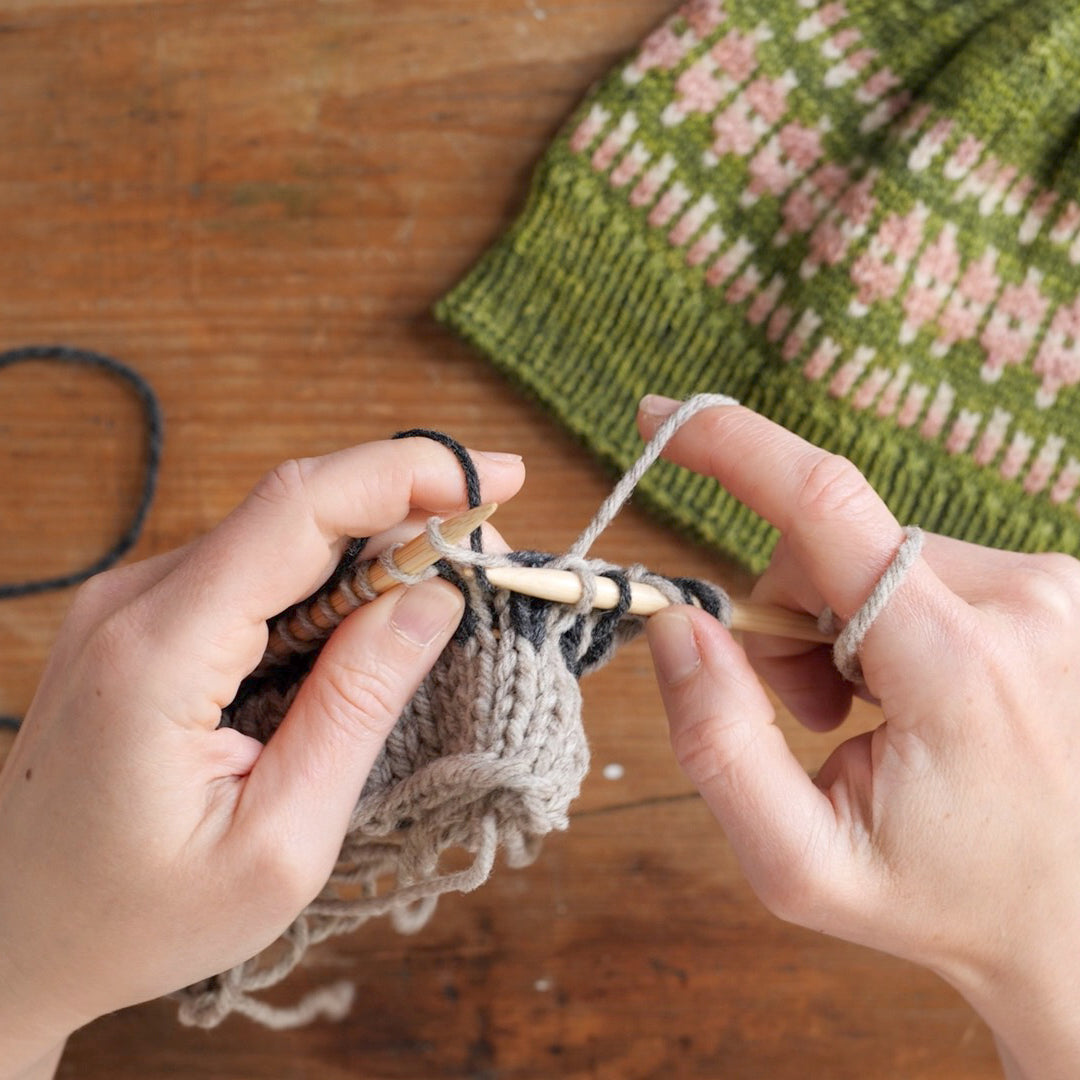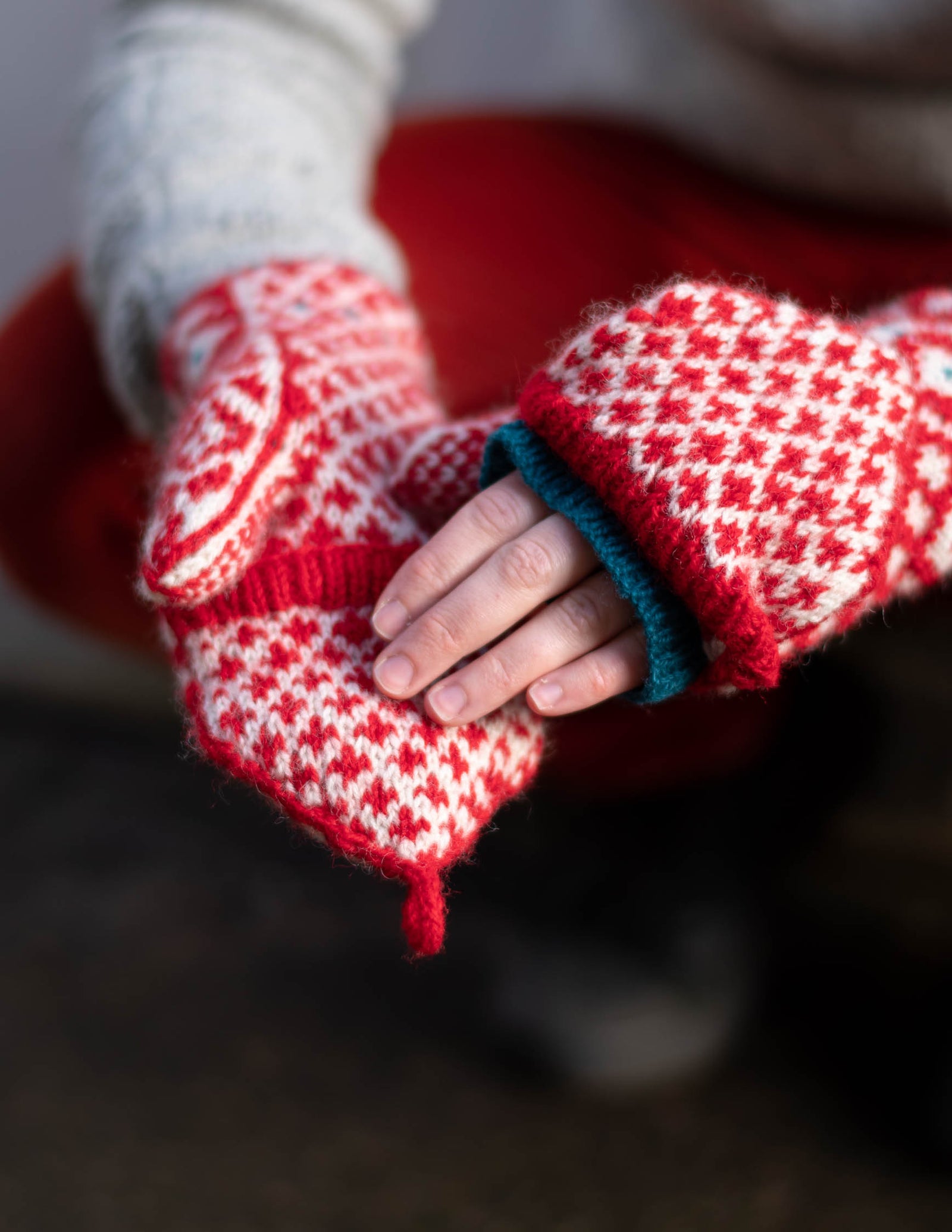
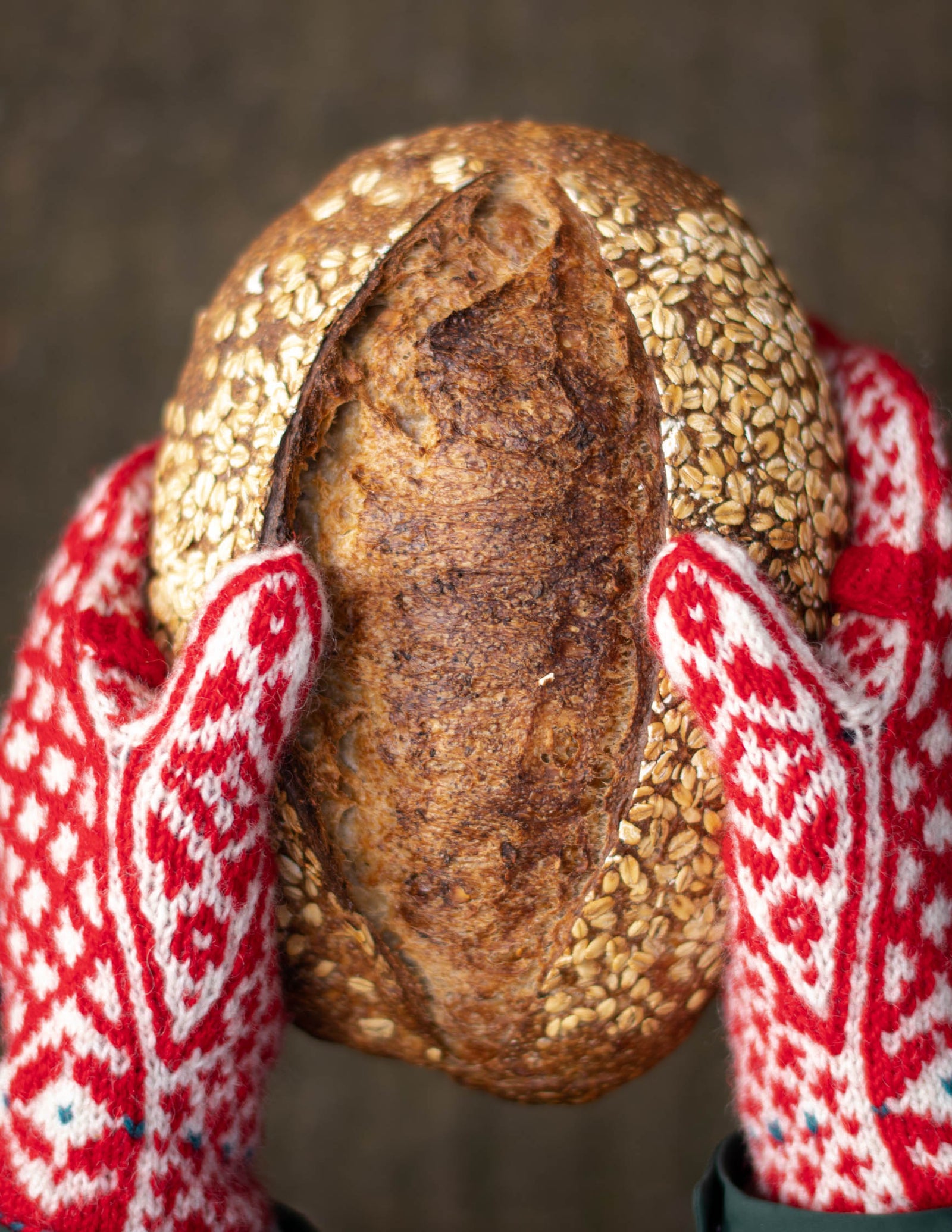
Broughton
- 4ply / Fingering weight yarn
- Also available in Colourwork Club
- Also available on Ravelry
The Broughton mittens features simple but effective small repeating stitch patterns, combined with a bold geometric cuff pattern. They include some new, fun techniques like the Estonian Kihnu braids at the cuff, and feature an optional flip-top opening. Ysolda designed the flip-tops because she wanted to be able to quickly use her fingers without risking a mitten falling in a puddle!
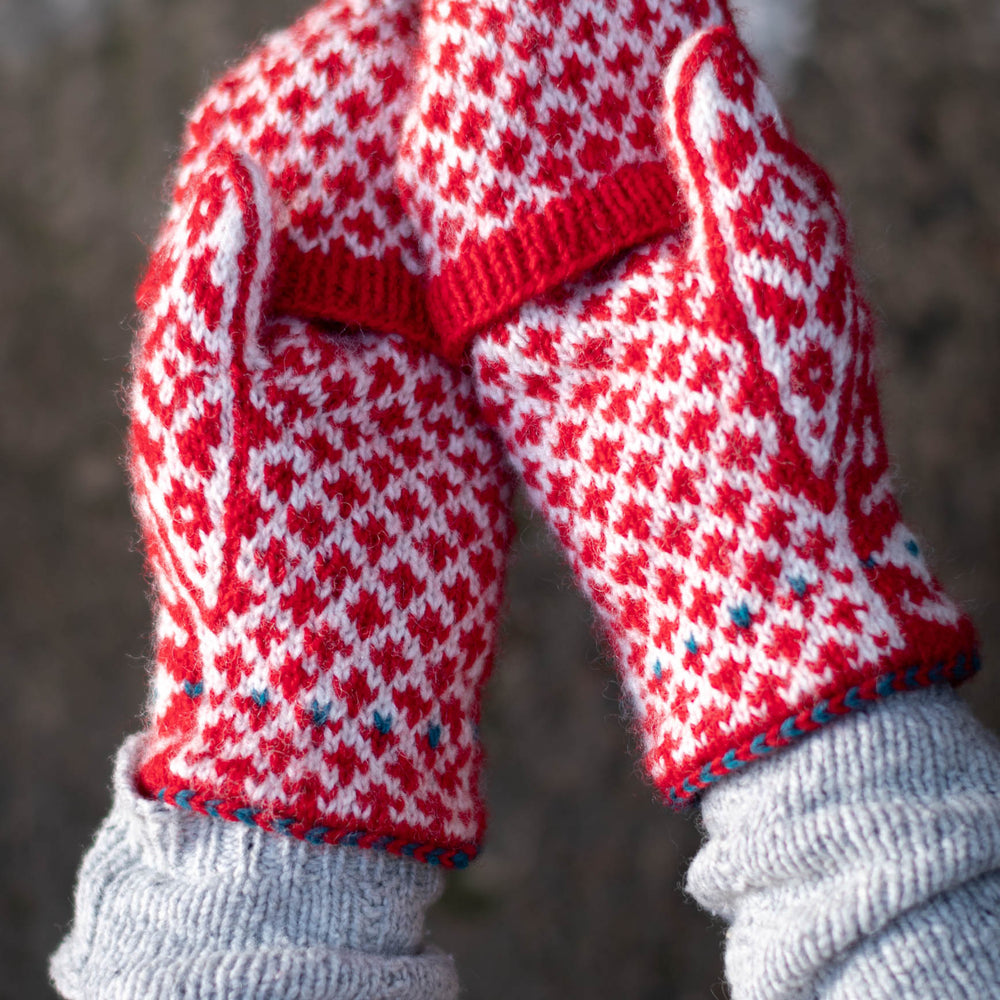

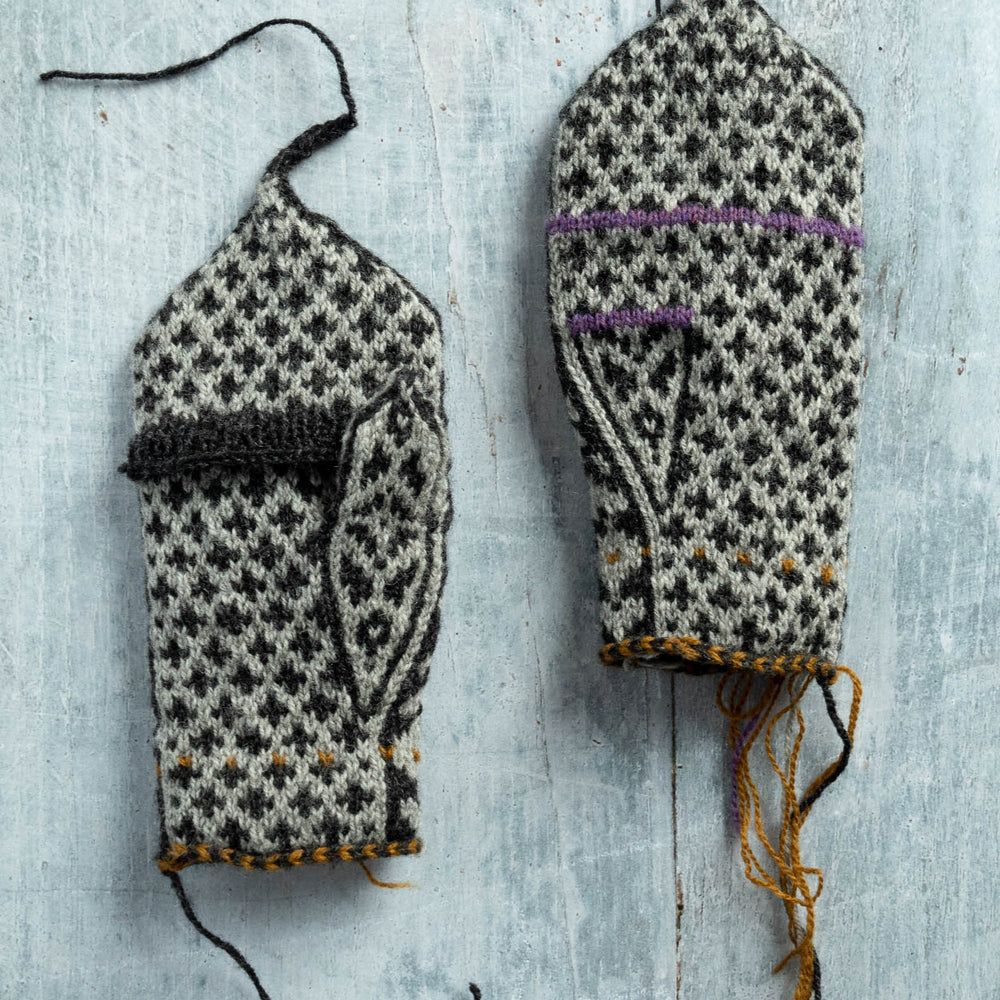
Details
For extra warmth, softness and a neat finish the mittens are lined with lambswool, which is used held double to add a pop of contrast on the cuffs. The thumbs and flip-top openings are worked using an afterthought method where stitches are held by knitting them with scrap yarn, which is removed afterwards to create an opening and live stitches — this is a really useful technique that you can use for sock heels and pockets, as well as thumbs.
Skills for knitting this project
Build your skills by following the links to our clear step-by-step tutorials.
- knitting, purling
- casting on
- binding off
- working in the round
- working small circumferences in the round
- colourwork (using a chart)
- make one increases
- k2tog decreases
- ssk decreases
Optional Techniques
- Broughton mittens tutorial part 1
- Broughton mittens tutorial part 2
- Broughton mittens tutorial part 3
Gauge
26 sts and 28 rnds = 4" / 10cm in charted stranded colourwork pattern with larger needle
Sizing
3 sizes available, choose a size approx 1.5” larger than the circumference of your hand above the thumb.
Finished circumference: 8¼[9¼, 9¾]“ / 21.5[23, 24.5] cm Finished length: 9[9½, 10]” / 22.5[23.5, 25] cm
Shown in size medium
Learn all of the skills you need to make Broughton with our beginner colourwork course. The Stranded Colourwork Basics course is a 4 week self-guided online knitting course, with continued access to the course so that you can return to each chapter for a refresher, again and again, whenever you need.
Supplies
Yarn
Outer (MC & C1): Double knitting DK wool yarn.
Shown in Rauma 3tr. Strikkegarn (100% Norwegian wool, 118 yds / 108m, 1.76oz / 50g)
Lining (C2): Heavy laceweight / light fingering wool yarn.
Shown in Rauma Lamullgarn (100% Norwegian wool, 273 yds / 250m, 1.76oz / 50g)
Needles and notions
Needle A: Size US 4 / 3.5mm dpns or circulars for your preferred method of knitting small circumferences in the rnd.
Needle B: Size US 21/2 / 3mm dpns or circulars for your preferred method of knitting small circumferences in the rnd.
Change needle size as necessary to get gauge, and use a needle two sizes smaller than needle A for needle B
Version information













